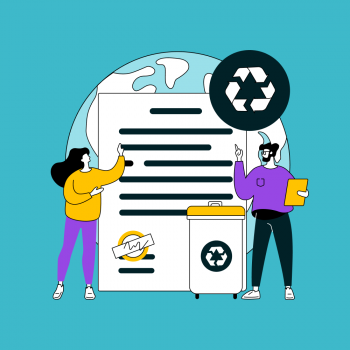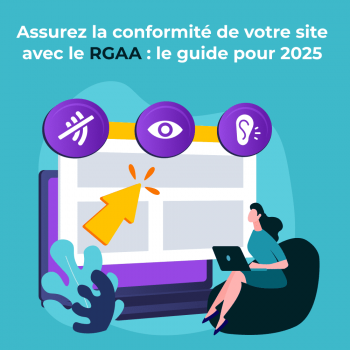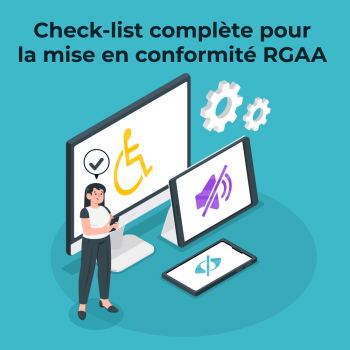In the current context, how can we design less energy-consuming digital platforms and infrastructures to reduce greenhouse gas emissions?
We all thought that by reducing our production and consumption of paper and by limiting certain travels, among other things, digital technology would allow us to make the planet greener. However, the massive digitization of our lives and production processes has not, for the moment, allowed us to reduce our general energy consumption, especially fossil energy.
Indeed, the electrical consumption attributable to digital represents 10% of the world consumption and, when we know that 40% of the electrical production is made from coal, we understand better why we estimate that digital is responsible for 4% of the greenhouse gas emissions (with forecasts at 8% in 2025).
In addition to this structural threat, there is a cyclical threat. In 2019, 62.9% of the world's electricity production came from fossil fuels. With the explosion of prices, trade-offs are likely to be necessary and quite impactful:
- Which is more important: hospitals or my 5G network?
- What do I choose this month, gas heat for my home or my commercial-free Netflix subscription?
At a time when the effects of climate change, ocean transformation, and biodiversity loss are increasingly being felt, many questions arise about the environmental footprint of digital technologies.
Eco-design and Low-Tech, what is it?
Eco-design integrates environmental protection from the design phase, with the objective of reducing environmental impacts throughout the process. Eco-design also allows to reduce production costs.
When we talk about Low-Tech, we can also talk about "Ecological Site", or "Eco-Friendly Site".
Low-Tech is characterized by the implementation of simple, fast, inexpensive technologies, accessible to all and using common and local means. Low-tech is a trend that promotes open, accessible and sustainable techniques and technologies.
It is therefore an integral part of the concept of frugal innovation, which consists in meeting specific needs with the least sophisticated and least expensive technological solutions possible, without making any concessions on the level of service provided.
Low-Tech is useful, accessible, sustainable, resilient, robust, repairable, recyclable, agile, functional, ... and allows to :
- Live better with less
- Collaborate and contribute
- Diffuse and transmit
- Explore and experiment
How to design a Low-Tech website?
Good practices
The idea here is that reducing data transfers reduces energy consumption and wear and tear on devices, which will ultimately reduce the overall environmental footprint (in terms of greenhouse gas emissions, water consumption and resource consumption).
We thus take as a reference one of Frédéric Bordage's books, “Ecoconception web - The 115 best practices”, Github and Green Code Lab.
If we summarize in a few words this eco-design approach, it is mainly about reducing the use of bandwidth, reducing the number of requests, reducing the complexity of the page. This approach is mainly oriented towards reducing technical debt and software obesity, the ability to maintain the code as long as possible thanks to good technical choices (choice of libraries, etc.) and the fact of creating the most efficient and fast user experience (the Ux) possible. Don't forget to define a good site design and a good content strategy.
How to develop Green?
Clean Coding
Clean Coding, or Green Code, is a software development practice that aims to reduce the environmental impact of computer applications. It allows to reduce the load on the server and thus the energy consumption during the navigation, the goal being to limit the number of requests between the site and the server (shorter loading time), to make the site less energy consuming and to make good choices of technologies, more sustainable. It is above all an approach that aims to write code that is efficient in terms of energy consumption, bandwidth and computing resources.
There are several ways to implement Clean Coding:
- Use energy-efficient algorithms, such as sorting or search algorithms that are faster and consume less energy, and energy-efficient data structures, such as sorted arrays or binary search trees that are faster and consume less energy.
- Optimize loops and flow control statements to reduce energy consumption.
- Use native programming language functions to reduce power consumption.
- Use energy-efficient libraries for common tasks, such as data compression or encryption.
- Use profiling tools to identify the most energy-intensive parts of the code and optimize them, as well as testing tools to verify that the code is energy efficient.
- Use refactoring methods to make code more readable and maintainable.
By implementing these practices, developers can significantly reduce the environmental impact of their applications and contribute to a more sustainable future. Importantly, these practices can also improve application performance and make code easier to maintain.
Some ideas to remember for designing a Low-Tech website
In order to help you in your eco-design process, we have listed below some great ideas to remember regarding the design of a Low-Tech website, in order to help you better plan, adapt and design your website in a more ecological way.
- Really ask yourself the question of what you want to upload on the internet, if you think it is worth it or not.
- Host your site on a server that consumes little power (or powered by wind or solar panels).
- Avoid CMS, javascript and heavy databases. Give preference to HTML/CSS by minimizing your code.
- Be careful with your images and videos: compress them as much as possible, or use less. Also pay attention to their weight
- Minimize the number of pages on your site and avoid unnecessary animations. Also pay attention to their weight and speed.
- Use basic typography (Arial, TImes, Verdana, etc).
- Delete your old content, if it is no longer relevant.
- Think of designing a site with a majority of text and a minority of images and animations.
The Low-Tech websites we have designed
At Ylly, we have two interesting examples of eco-responsible websites that we have designed:
– Adhex
Our client, Adhex Technologies, is one of the world leaders in high performance adhesive solutions for industry. With them, we co-designed their new site, inspired by the graphic universe of periodicals and the press in general, in order to deploy a more sober and less energy consuming site.
– Axionable
We have been working for a few years with Axionable, the first consulting firm specialized in AI and Sustainable Data. In the redesign of their website, the objective was to present the company while highlighting its positioning. We took up the challenge to develop a cleaner, more modern site that best represents the company's raison d'être.
At ChangeNow, one of the world's leading sustainability trade shows, the site was recognized as the most energy efficient of all the exhibitors at the event.
To learn more about the best UX/UI practices to design a Low-Tech website, how to adapt the images and the content of your website or how to prepare your hosting to consume less and be more Eco-Friendly, do not hesitate to contact us








